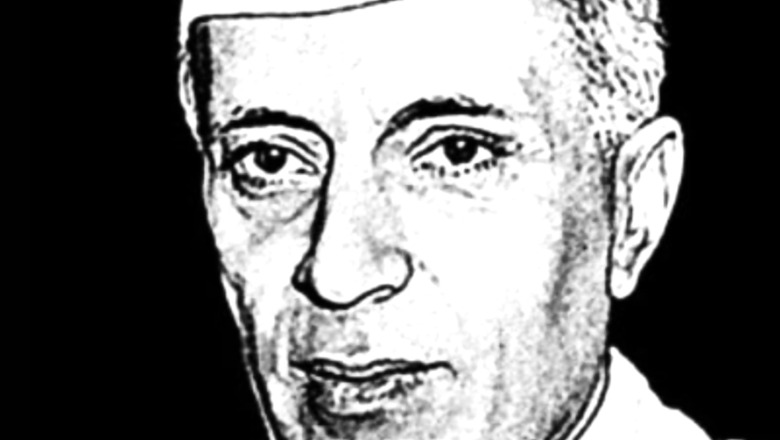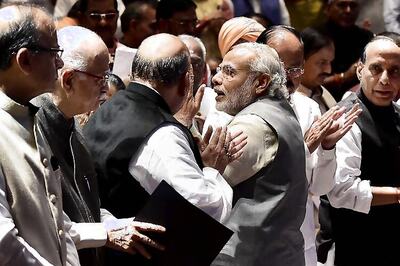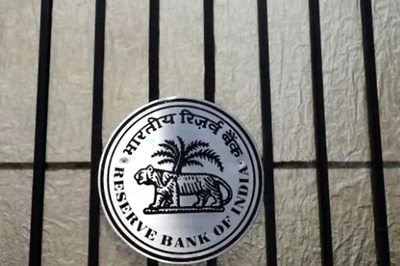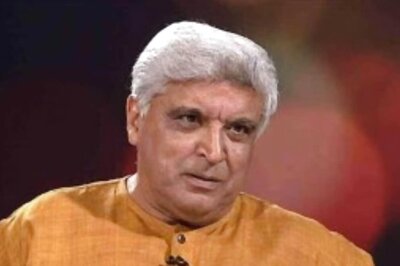
views
Let us suppose, for the sake of argument, that you have invented a perpetual motion machine. In other words, a machine that produces its own energy as it runs. Exactly what we need at a time of high oil and gas prices worldwide.
Having made this path-breaking invention, it is understandable that you would like to make some money off it. For that, let us say you decide to file for a patent with the US Patent Office. Once you own the rights to your idea, you can start selling it.
But wait! The patent office will most likely ask you to submit a “working model” of your invention. In fact, because your discovery appears to violate the laws of physics, they will almost certainly ask you for one. And that is where you will trip up. It doesn’t matter how many compromised “experts” you have lined up to support your claim. Your fraud will be exposed.
In recent times, there has been a tug of war over the term “idea of India.” Apparently, the Nehruvians had this big idea of how to run India as a modern, secular and pluralistic democracy. We are supposed to have licensed it from them. And now that an inexorably non-Nehruvian party is in power, the “idea of India” is in danger.
Let us ask a more fundamental question. Was there a Nehruvian idea of India to begin with? Or was it like the perpetual motion machine, which is not real.
This is where the question of dynastic succession in Indian political parties becomes so relevant. If there was a Nehruvian idea of India, it must be able to produce its own ideological successors. In other words, younger leadership within each such party would absorb the ideology, then interpret it in their own way. A battle of ideas would follow, along with the usual power games of course. The winner would rise to the top and the process would repeat. This is what living, breathing ideology looks like.
But is that happening? Most certainly not. All the political parties that claim to believe in the old idea of India have proven to be ideologically sterile. Instead, the only way these parties survive is through dynastic succession. And whenever there is no obvious candidate for dynastic succession, the party gradually withers away on the ground.
How did the Indian political landscape become so full of family based parties? There were brilliant political entrepreneurs who either broke away from old parties or started their own, such as the Janata Dal, or the Bahujan Samaj Party. But these parties and their remnants are now struggling to survive. The only ones that have survived the test of time are the dynastic ones, such as the Samajwadi Party, the Rashtriya Janata Dal or the Nationalist Congress Party.
Once you start looking, you see this phenomenon everywhere. In Bihar, the JD(U) is now a shadow of its former self, with only about half the seats that the BJP has. To his credit, Nitish Kumar kept his family out of politics, and now the JD(U) is without a political successor. The RJD, on the other hand, appears to have a bright future under Tejashwi Yadav. In Uttar Pradesh, Akhilesh Yadav has taken over the reins of the SP and is running a vigorous campaign. The BSP, on the other hand, is fading from the ground, from the media as well as public imagination. The other day, as results from Tamil Nadu local body polls showed, the AIADMK is receding, with even the BJP making inroads in its place. The DMK legacy, on the other hand, is safe with M.K. Stalin.
Once you see it this way, you begin to appreciate the importance of why West Bengal chief minister Mamata Banerjee appears to be preparing her party for dynastic succession. Unless she chooses a family member right now and begins the process of transition herself, the Trinamool Congress (TMC) might not have a future. Even with the Communists in Kerala, where Pinarayi Vijayan has given his son-in-law a prominent cabinet berth, despite the latter being a first-time MLA. You might have noticed that Shailaja “Teacher”, who was hailed by the media during her term as health minister, was dropped. Perhaps, Pinarayi Vijayan realises that without some form of dynastic succession, even the Communists in Kerala might end up like the Communists from West Bengal.
So the parties which claim to uphold the old idea of India either exhaust themselves with one generation or transition into family based parties. The BJP, on the other hand, which positions itself as rejecting Nehruvian ideas, has no such problem. The party acknowledges its origins in the ideas of Savarkar, Golwalkar and Deendayal Upadhyaya. This was followed by the era of Atal and Advani, and now the era of Modi. You will always find a lively discussion among BJP supporters about who will carry forward the mantle of the party once PM Modi decides to retire. It is a favorite subject among them that generates a lot of curiosity, spirited debates and even heat. The key is that everyone knows that the party will continue to thrive; there will be a successor in due course, and that PM Modi’s family is not even in the running.
These are all signs that the BJP has its own ideology. We know that this ideology is living and breathing, because it produces ideological successors and evolves with each generation. The Nehruvian idea on the other hand, if it exists, has to be carried forward by a fourth or fifth generation dynastic successor. How so? And in that case, should we not ask if there was a Nehruvian idea of India to begin with?
There is an often-repeated assertion that this Nehruvian idea made India into a modern democracy. But this hypothesis should be challenged. How could Nehru have sowed the seeds of democracy in India when he failed to sow them within his own party? After Nehru’s death, there was a ripple of a power struggle within his party, but it quickly collapsed into a family based enterprise. Even six decades later, his party has not come out of that spiral.
Seventy years after it was first claimed, the Nehruvian idea of India has failed to submit a “working model”. The alleged ideology cannot be passed from the minds of one generation to the minds of another. It can only be inherited, in classic medieval fashion. If there is no dynastic successor, it collapses. Like the idea of a perpetual motion machine, was this idea ever real?
Indian democracy, on the other hand, did not collapse. When Indira Gandhi made a move to curtail it during the Emergency, Indian people responded in dramatic style. The defeat of the Congress party in 1977 elections may be the only example of an impoverished third world country in that era that rejected authoritarian government. So where did the ideals of democracy really come from? Did it come from Nehru and his Congress, or from the Indian people?
We are left with some obvious conclusions. First, there was probably no particularly high and mighty Nehruvian ideal that deserves to be called “idea of India”. And challenging Nehruvian ideas is not the same as challenging our national ethos, least of all the ideas of democracy, tolerance and social justice. Those ideas belong to the Indian people and they always have. India that is Bharat belongs to its people. Their fundamental beliefs make up the idea of India. It is time to give our people the credit they deserve.
Abhishek Banerjee is an author and columnist. He tweets @AbhishBanerj. The views expressed in this article are those of the author and do not represent the stand of this publication.
Read all the Latest Opinion News and Breaking News here




















Comments
0 comment